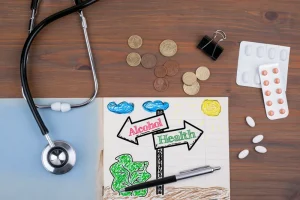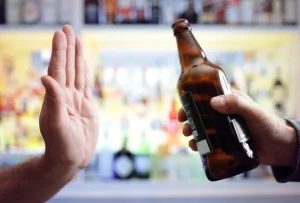


A person can discuss any concerns about their drinking with a doctor. At this point, you may have alcohol cravings or drink to avoid the low feelings withdrawal causes rather than for the pleasurable feelings alcohol consumption may offer. The National Institute on Alcohol Abuse and Alcoholism defines moderate drinking as two or fewer drinks in a day for men and one Do Alcoholics Drink Every Day or less in a day for women. Excessive (binge) drinking is defined as four or more drinks on a single occasion for women and five or more drinks on a single occasion for men. Discover how many people with alcohol use disorder in the United States receive treatment across age groups and demographics. Binge drinking is behavior that raises blood alcohol levels to 0.08%.
Stopping drinking alcohol has a wide array of physical and mental health benefits. Drinking moderately if you’re otherwise healthy may be a risk you’re willing to take. But heavy drinking carries a much higher risk even for those without other health concerns. Be sure to ask your healthcare professional about what’s right for your health and safety. For women, more than three drinks on any day or more than seven drinks a week is heavy drinking. For men, heavy drinking means more than four drinks on any day or more than 14 drinks a week.
Plus, many beers these days have much higher alcohol contents than 5 percent—many may be as high as 9 or 10 percent. Dr. Oesterle leads Mayo Clinic’s inpatient rehabilitation program for addiction and says he often sees alcohol use become a problem for people after they retire. When these people were employed, they may have been too busy to consume copious amounts of alcohol.
No matter what stage of alcoholism someone is currently experiencing, there is hope to get through their alcohol addiction. Medically-supervised detox followed by an inpatient treatment program can increase the likelihood of successful https://ecosoberhouse.com/ recovery and help people regain control. For more information on the stages of alcoholism for functioning alcoholics, contact us today. This is the rarest and most dangerous type of alcoholism, making up 9.2% of alcoholics.
Recent research has shown that any alcohol consumption can negatively affect a person’s health. People used to refer to alcohol use disorder (AUD) as alcoholism, and the people with it as alcoholics. Experts have increasingly seen these terms as negative and unhelpful labels. Today, instead of people being alcoholics, professionals refer to them as people with AUD. Depending on the severity of their alcohol use, a person may experience withdrawal symptoms that begin within 6 hours after they stop drinking. Symptoms can be mild, such as headaches and palpitations, or severe, such as delirium tremens.


I provide both individual and group therapy, such as psychoeducation to provide insight into the disease of addiction as well as promoting long-term sobriety. Having a strong passion for the arts, William earned a B.A in Cinema production. Following completion of his degree at San Francisco State University, William worked on film/tv projects for major Hollywood production companies including Sony and Universal Pictures. Organizations such as the World Health Organization (WHO) states that any amount of alcohol a person consumes can have negative effects on their health. However, in a 2014 study, the CDC found that 9 out of 10 people who drank heavily were not dependent on alcohol.

Although they still have a job, their performance is probably not what it used to be. They may also feel like it takes everything they’ve got to feel and act normal. If you are only drinking one 5-ounce glass of wine with dinner, and not drinking more before or after the meal, this is well within the guidelines of moderate drinking. For women, drinking one glass of wine per night, less than seven days per week, is moderate drinking. While you may still experience some side effects from drinking this frequently, it is not considered AUD or addiction. You can get help from an experienced physician or therapist for a diagnosis.
Despite my efforts, I couldn’t will myself the ability to be an engaged, present friend. I couldn’t shake the feeling that I just wanted to go drink somewhere. Your brain becomes accustomed to using alcohol to boost dopamine and deal with stress, boredom, and other unpleasant feelings.

“Some people think of the effects of alcohol as only something to be worried about if you’re living with alcohol use disorder, which was formerly called alcoholism,” Dr. Sengupta says. Heavy drinking can also lead to a host of health concerns, like brain damage, heart disease, cirrhosis of the liver and even certain kinds of cancer. Visible signs of alcoholism may become apparent during middle-stage alcoholism. The overwhelming need for the body to operate with alcohol in the system begins to put the disease in the driver’s seat.